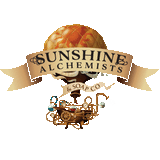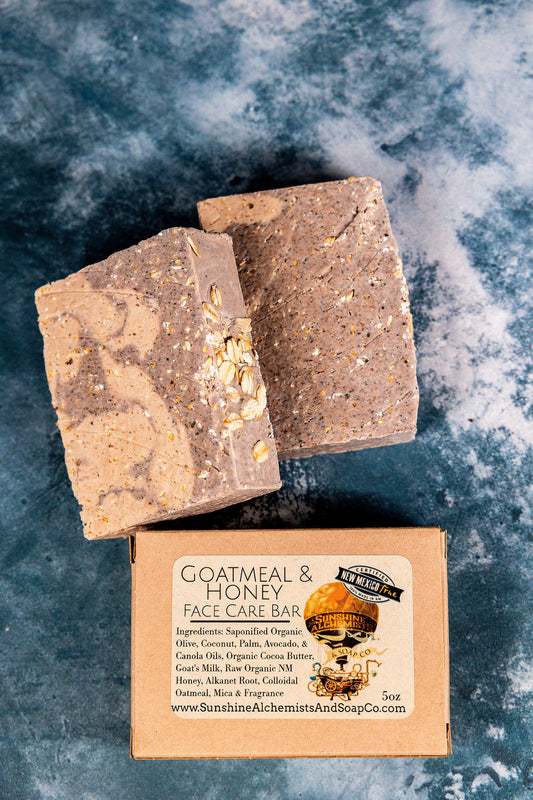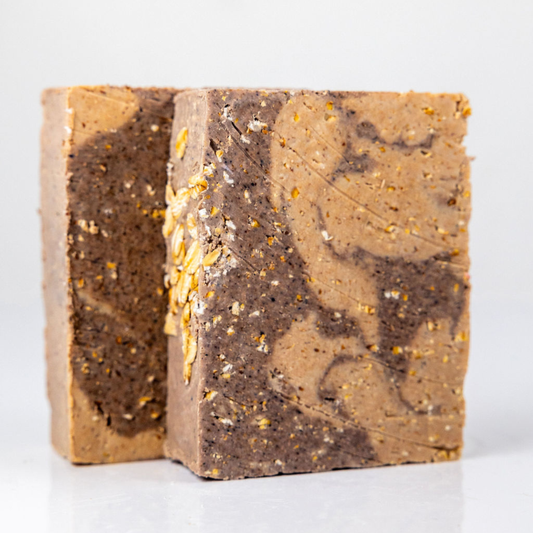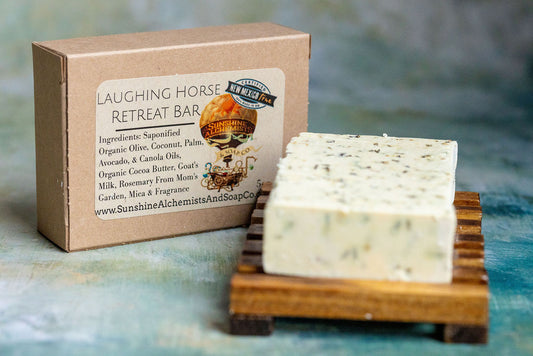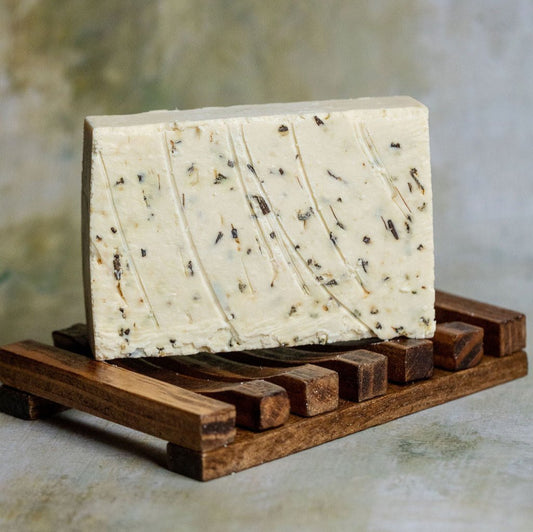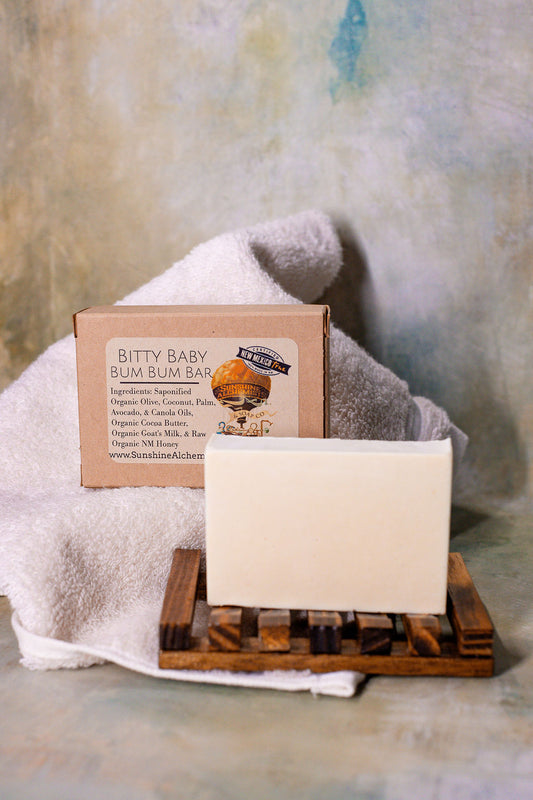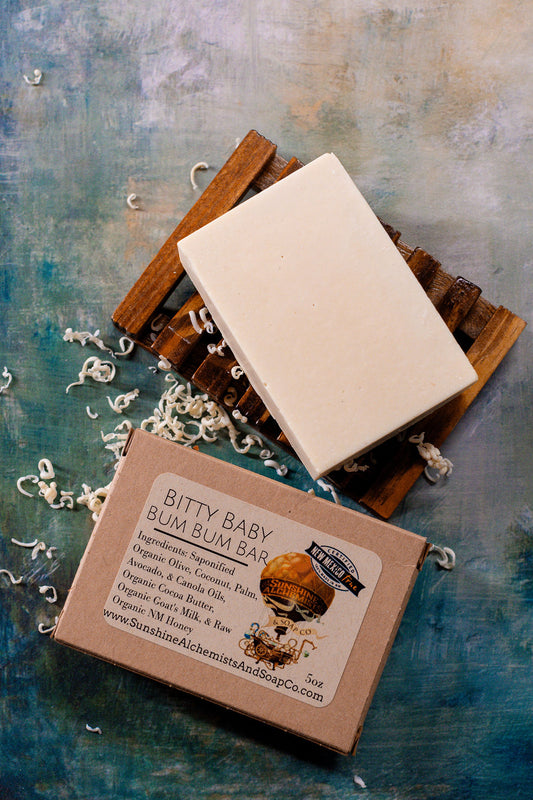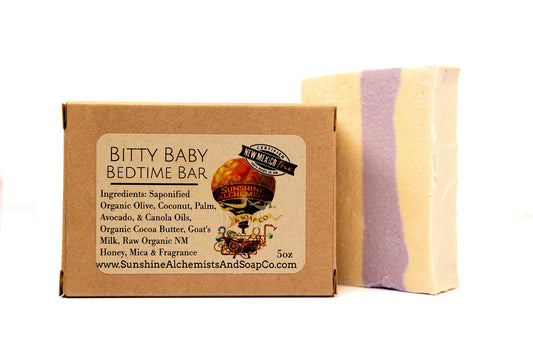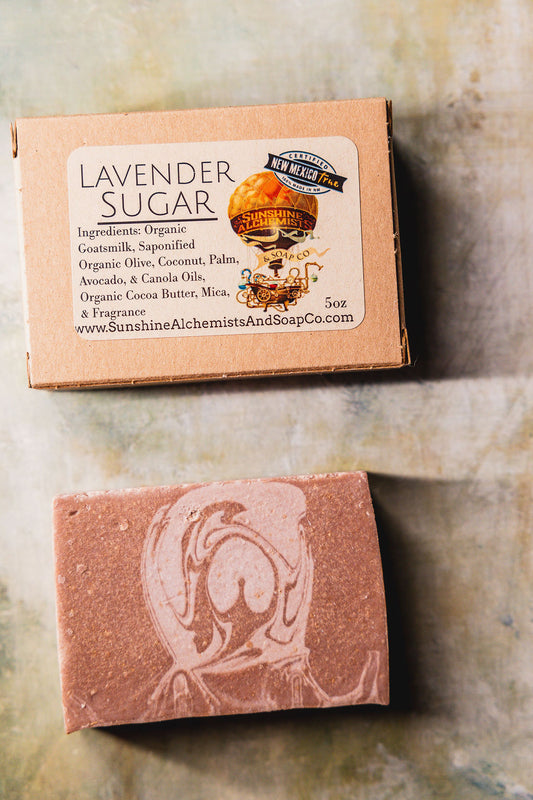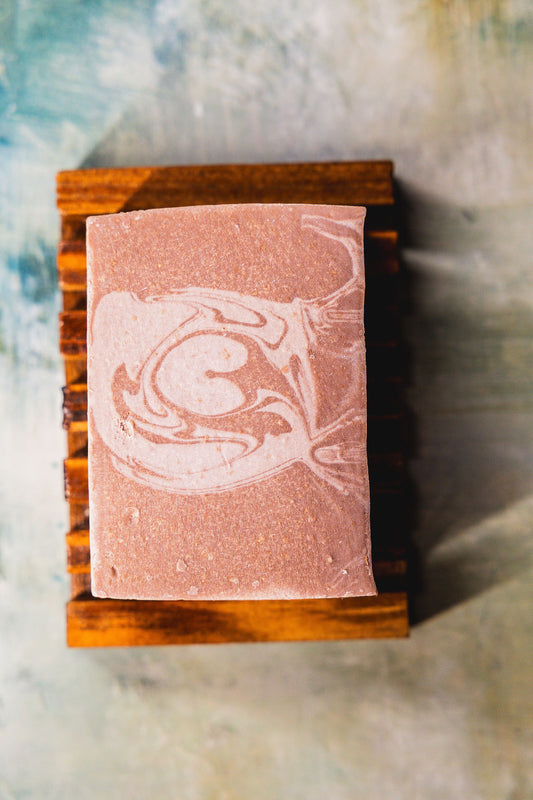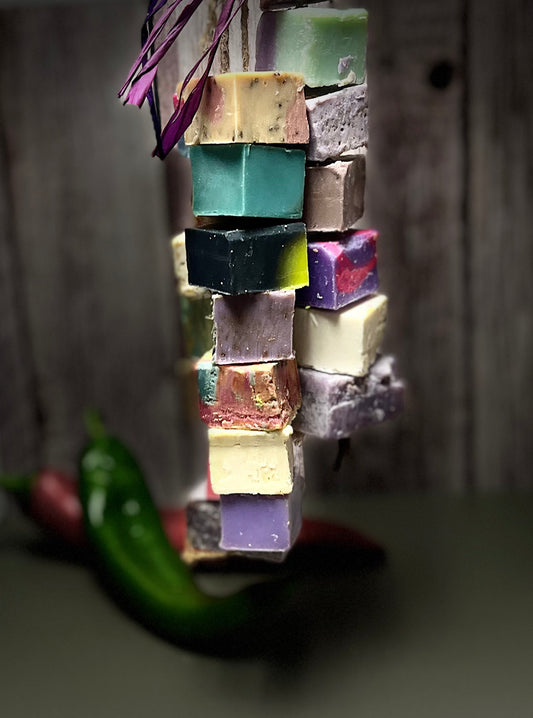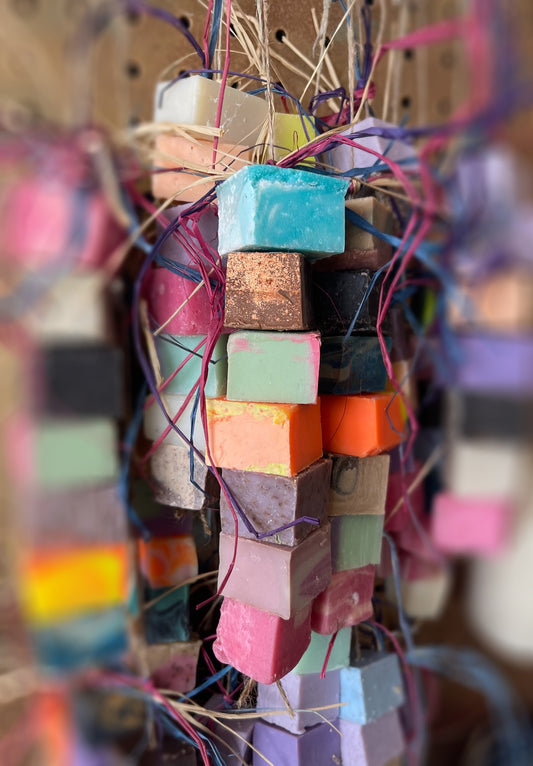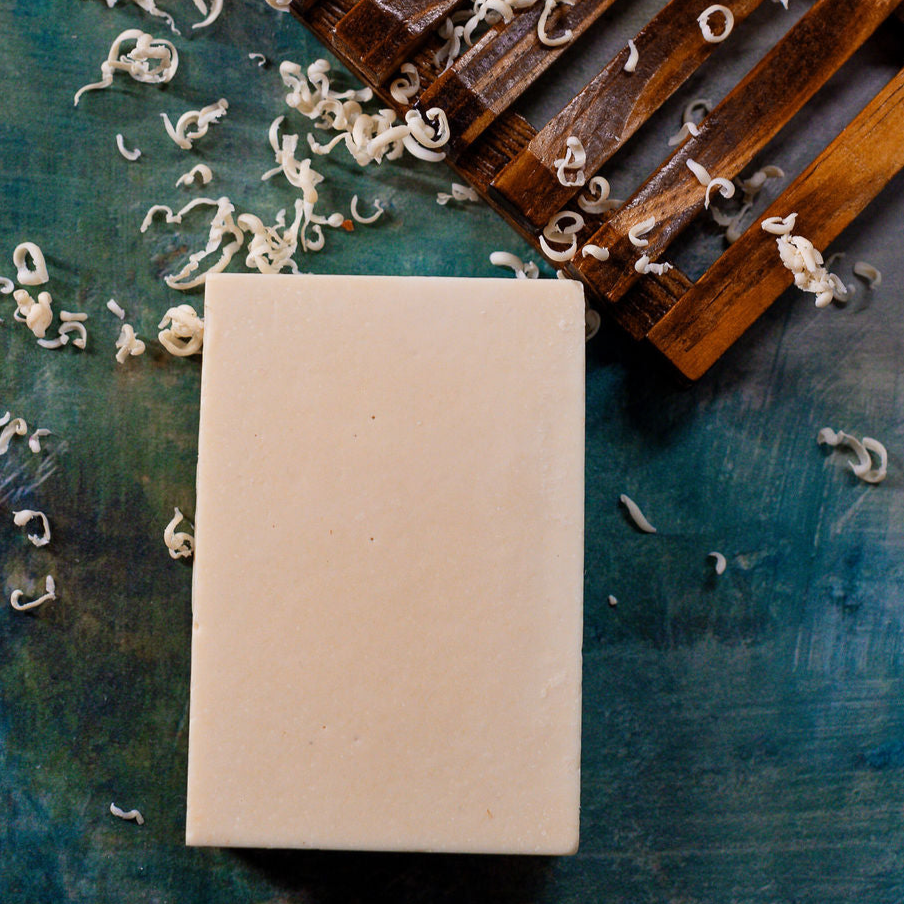
Ingredient Snobs To The Rescue
If you have ever suffered from dry skin, itchy skin, flaking skin, sad skin, bored, uninspired skin that craves yummy smells & heart lifting color but insist on non-carcinogenic ingredients (crazy you) - we're about to change your self-care game.
Mix & Match any soaps - body, face, hand or shampoo bars - 3/$30 or 12/$110
-
Goatmeal & Honey Handmade Soap For Face
Regular price $12.00 USDRegular priceUnit price per -
Laughing Horse Personal Retreat Bar Handmade Goat's Milk Soap
Regular price $12.00 USDRegular priceUnit price per -
Bitty Baby Bum Bum Bar Handmade Goat's Milk Soap
Regular price $12.00 USDRegular priceUnit price per -
Bitty Baby Bedtime Bar Handmade Goat's Milk Soap
Regular price $12.00 USDRegular priceUnit price per -
Lavender Sugar Handmade Goat's Milk Soap
Regular price $12.00 USDRegular priceUnit price per -
Soap Ristra AKA Sample String
Regular price $12.00 USDRegular priceUnit price per
-

Bio-Available Nutrients
The triglyceride fat molecules in goat's milk are small, making them more easily absorbed by the skin. This efficient absorption delivers moisture and nutrients directly to the skin's deeper layers, restoring and maintaining the skin's natural lipid barrier. This barrier protects from pollution, harsh weather which can lead to dryness and premature aging.
-

LOVE & SUNSHINE IN EVERY DROP
We pour, cut and package everything we make by hand in micro batches in New Mexico, USA since 2015. We’re a 100% woman-owned business and we research the heck out of every ingredient to insure that they are all organic, certified sustainable, ethically sourced, cruelty free, non-toxic, environmentally responsible and still FABULOUS.
-

Band Together & Buy Better
Raise your hand if you’re sick of buying mass produced garbage with scary ingredients you can’t pronounce and are pretty sure are killing you slowly.
Top it off with plastic packaging that will live forever in a landfill and we have a legacy that will go down in infamy.
Join us in choosing simple, organic, nourishing ingredients and packaging that is either made with recycled material, recyclable, reusable, or all three.
Like Wu-Tang, it’s for the children.
all the news that's fit to print
AKA FAQs
Isn't Palm Oil Evil Now?
Palm oil itself has never been evil and ours is RSPO certified sustainable. What does this mean?
The Roundtable for Sustainable Palm Oil has certified that the palm oil we use has come from small, legacy farms that have been using sustainable farming methods for generations.
Rather than having a knee jerk reaction to current hot button issues, we have chosen to continue including palm, a wonderful oil with many valuable and nourishing properties for the skin, we chose to dive a little deeper into the issue and support families that rely on selling their crops for subsistence. In this way we have made a choice that is good for the planet and also our fellow humans on the other side of the globe.
Does Your Soap Have Lye?
Yes.
All soap has lye.
If you're using a bar or dollop of something to wash your skin and it doesn't have lye, it is a detergent or surfactant and not soap.
Sodium hydroxide (lye) saponifies (turns into soap) oils and butters and that is soap making in it's simplest terms. If there's no lye (this can also be potassium hydroxide or even ashes) you don't have soap, you have something else.
No shade, but if you are buying handmade soap and the person selling it to you says that it doesn't have lye in it, they aren't a soap maker.
They may have purchased a melt and pour base and used that to "make" soap and don't understand that the base already has lye in it or they may buy their soap and repackage it and not understand their ingredients ie. the ingredients say saponified xy&z oils and butters which MEANS, lye (sodium or potassium hydroxide) was applied to turn those base ingredients into soap.
Finally, please don't be afraid of soap made with lye.
Properly made soap has a very precise amount of lye calculated based on the exact oils and butters and their weights and in the case of our soap, we reduce that amount so that 6% of the gorgeous, nourishing organic vegetable oils and butters we use are available AFTER saponification for your skin to absorb.
That's why they're so moisturizing.
We've got you.
Super-Fat Is Where It's AT! (Why our soap is NEVER drying)
I bet you're sitting there wondering what the heck super-fat means and what on earth it has to do with soap that soothes and moisturizes dry irritable skin.
Hang on. Here comes the nerdy stuff. Short version?
SKIN LIKES FAT SO WE GIVE IT SOME IN OUR SOAP.
When you make soap, you calculate the precise amount of sodium hydroxide (yes, this means lye and it has to be there in order for it to be soap, see next question) that needs to be added to your recipe's specific oils and butters and the ratios at which they appear in the formula.
The fats we use are organic food grade vegetable oils and butters.
If a formula is left exactly at that 1:1 kind of ratio, all of the oils and butters are bonded with the sodium hydroxide and turned into soap. However, if you calculate the amount of sodium hydroxide you add to your recipe to be LESS than the 1:1 ratio,
the fatty acids (the yummy nourishing oils and butters described above) are left available for your skin to absorb.
Our formulations are calculated at 6% superfat for body and face bars and 20% for shampoo, hand and pet soaps.
Those percentages of oils and butters are what are left available for your skin to absorb and what gives our soap (along with the exact ratios and choices of base ingredients) it's increased moisturizing and emollient properties.
That is why our soaps will never make your skin feel tight, stretched, dry or flaky.
It's Super-Fat, and that's a GOOD thing.
Can I Make My Candle Last Forever?
Nope.
She's here for a good time, not for a long time, even with our long-burning blend - especially if it's your favorite scent - but you CAN help it live it's best life by following these steps:
- Burn your candle long enough that the melt pool extends to the entire diameter of your vessel, especially the first time you burn it. This prevents tunneling.
- Trim your wick to 1/4" before burning each time. This reduces smoking and extends the burn time of your candle.
- Please burn your candle in a safe place. Place it on a non-flammable surface away from curtains, hanging decorations and out from under any cabinets etc.
- Keep your lit candle away from children and pets.
- We recommend not burning your candle longer than 4 hours at a time. If you forget and your wick drifts over toward the edge of your vessel, re-center it after extinguishing the flame but while the wax is still warm, using a non-flammable tool such as a wick dipper.
- Don't BLOW your candle out. Use a snuffer, wick dipper or even gently place the lid over the vessel to put it out so hot wax doesn't splatter and reduce smoke.
- Let your candle cool completely once you've extinguished it before touching or moving it. A burning candle's average temperature is 1,800 degrees. We don't want you or your loved ones to be injured.
- We recommend you stop burning your candle once the wax has reached 1/4 inch from the bottom. We know many people ignore this rule and if you are one of them, we get it, you want to squeeze every drop of delectable fragrance out of your candle. Please KEEP AN EYE ON YOUR CANDLE. Why? If the entirety of your wax pool is sitting liquid on the bottom of your vessel with a flaming wick in the center, all of the wax may catch fire at once, turning your vessel into an impromptu sterno pot. Suboptimal. Hence the suggestion not to burn it to the bitter end, but if you must... please have a care.
- Store your candle with the lid on and in a cool, dry place when not in use. This keeps dust out and preserves the scent.
